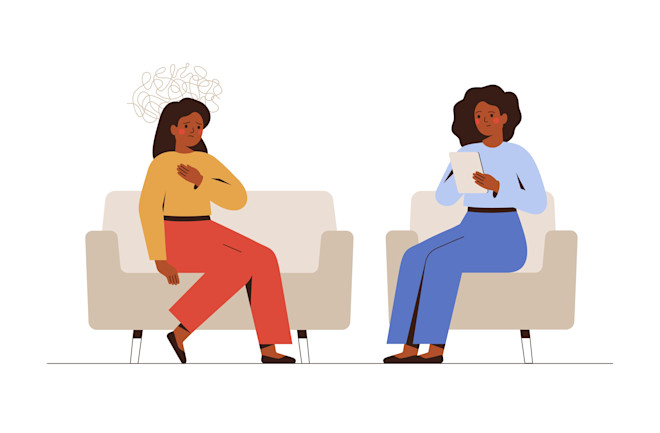
CBT is a widely used therapeutic approach for treating mental health issues. It aims to help individuals recognize and change negative thought patterns and behaviors. CBT has been found effective for a range of psychological problems, including depression, anxiety, stress, post-traumatic stress disorder (PTSD), obsessive-compulsive disorder (OCD), and eating disorders. Here is a comprehensive overview of CBT:
1. Core Principles of CBT
CBT is based on the idea that thoughts (cognitions), emotions, and behaviors are closely interconnected. The core principles include:
- The Connection Between Thoughts, Emotions, and Behaviors: A person’s thoughts influence their emotional responses and behaviors. Negative and distorted thinking leads to negative emotions and actions.
- Cognitive Distortions: CBT suggests that people often interpret situations more negatively than they actually are, and these distorted thought patterns negatively impact mental health.
- Behavioral Experiments: Behavioral techniques are used to change negative thoughts, encouraging individuals to face situations they fear or reduce avoidance behaviors.
2. Theoretical Foundation of CBT
The fundamental theory behind CBT is to help individuals become aware of their thought patterns and to question whether these patterns are realistic. Cognitive distortions, such as catastrophizing, overgeneralizing, and all-or-nothing thinking, are seen as key factors leading to emotional distress.
During CBT, individuals learn to identify these distortions and replace them with more realistic and positive thoughts.
3. Examples of Cognitive Distortions
- Black-and-White Thinking: Seeing situations as only good or bad.
- Overgeneralization: Drawing broad conclusions from a single event.
- Disqualifying the Positive: Ignoring or dismissing positive events or achievements.
- Catastrophizing: Thinking about the worst possible outcomes and worrying excessively.
4. CBT Techniques
Common techniques used in CBT include:
- Thought Records: Encouraging individuals to write down their negative thoughts and evaluate how realistic they are.
- Behavioral Experiments: Gradually confronting situations that trigger fear and anxiety.
- Cognitive Restructuring: Identifying and challenging negative or distorted thoughts and replacing them with healthier alternatives.
- Exposure Therapy: A technique primarily used for anxiety disorders and phobias, where individuals are gradually exposed to feared situations to reduce anxiety.
- Relaxation and Breathing Techniques: Methods to reduce stress and anxiety through relaxation.
5. Effectiveness of CBT
Research has shown that CBT is effective in treating depression, anxiety disorders, OCD, PTSD, eating disorders, substance abuse, and many other mental health conditions. One of the main advantages of CBT is that it is short-term and structured, usually completed within 10-20 sessions.
6. The Process of CBT
CBT typically starts with identifying specific problems. The process involves:
- Assessment and Goal Setting: The therapist and client agree on the issues to be addressed and set specific goals.
- Recognizing Problematic Thought Patterns: Helping the individual become aware of thoughts that trigger distressing emotions.
- Cognitive Restructuring: Replacing negative thoughts with more realistic and positive ones.
- Behavioral Change: Developing positive thinking patterns to improve behavior.
- Self-Management and Sustainability: Learning to apply the techniques learned in therapy to other areas of life.
7. Advantages and Limitations of CBT
Advantages:
- Short-term and focused on specific goals.
- Helps individuals develop self-help skills.
- Scientifically proven to be effective for common issues like depression and anxiety.
Limitations:
- May not be suitable for everyone, especially for complex traumas and personality disorders where longer-term therapies might be needed.
- Can lead to frustration for those expecting quick resolutions to their problems.
8. Who is CBT Suitable For?
CBT is suitable for individuals dealing with depression, anxiety, OCD, panic disorder, phobias, PTSD, eating disorders, substance abuse, and difficulty coping with stress. However, the effectiveness of CBT can be enhanced when the individual is open to therapy and willing to cooperate.
CBT helps individuals take responsibility for their thoughts and behaviors and empowers them to make changes, leading to greater feelings of control and strength
Share this content:
